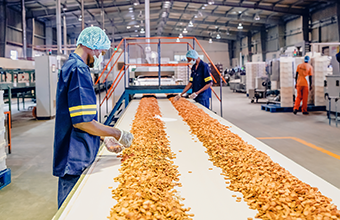The Good, the Bad, and the Future of Coworking
Coworking nationally
Across the country, coworking is increasingly growing office markets in most major cities. In the final quarter of 2018 alone, there were 44 million square feet rented compared to the 27 million feet rented during the same time of 2017.
A coworking space is a shared office for local working professionals who either work independently or collaboratively. Members of coworking spaces often include individual freelancers who want to break out from working at home to startups using the flexible space to manage overhead.
Coworking may have initially seemed like a trend in the U.S office real estate market, but it is in fact here to stay. According to Yardi Matrix’s latest study of coworking space in the top 20 U.S. markets, coworking space “increased nearly 62% year-over-year, from 27 million square feet in Q4 2017 to 44 million square feet in Q4 2018.”
In urban markets, the presence of coworking is almost doubled that of suburban markets. The Yardi Matrix study also shows that coworking’s popularity prevails in “metropolitan office markets with the highest concentrations of high-tech employment.”
Coworking locally
In San Diego, coworking spaces passed the million square foot mark in the past year and the continued expansion shows no signs of slowing down. Both national and local companies are growing in San Diego County, including big names like Regus, Spaces, and WeWork along with smaller locations popping up like Desk Hub, Union Cowork, Common Grounds, and Co-mmunity.
Though San Diego is behind the other major cities in California with Los Angeles representing 4.7 million square feet and San Francisco using 3 million square feet, it is still in the top 20 office markets in the country.
What’s causing the rise in coworking?
In the past, the U.S. economy has been established alongside traditional 9-5 employment in a set office, providing workers with a steady income, health insurance, and vacation days.
Today, the gig economy has flooded the market with opportunities that break the traditional desk job. These roles include Uber or Lyft drivers, freelance writers or developers, Airbnb, and even dog walkers.
Technology and freelance platforms have played a huge role in launching this type of economy. There are numerous apps available for smaller business, independent workers and contractors to manage everything from scheduling to payments, cutting out the need for reliance on hiring people.
This is especially true in San Diego where tech start-ups are prevalent and the need for affordable office space is high. Amenity-rich offices are attractive for the younger workforce. Even larger companies are using coworking more in their business strategy, providing employee flexibility and reducing fixed expenses (although higher on a price per square foot basis).
Coworking offices or shared spaces break the traditional office setting, but also provides more structure and social interactions than an at-home office. More landlords and coworking companies are matching their space to their client’s needs by offering amenities, flexible leasing options that could have a small business in a space for an eight-week term—unheard of in traditional real estate—and fully furnished suites.
Though rent prices by the square foot for coworking spaces are astronomical when compared to simply renting out office space, these coworking locations are often completely furnished and ready-to-use, while offering fun perks such as kombucha on tap, on-site showers, and even community paddle boards.
The downside of coworking
Despite the flexibility and many other perks of using a coworking space, this environment also comes with drawbacks. In a traditional office, a business can establish and implement its company culture. Since a coworking space can host numerous individuals and other companies, it’s nearly impossible to establish these set of values. The less-structured feel of a shared space makes it difficult to draw a line between work and socialization, leading to wasted time and ultimately money.
Coworking spaces are meant to increase productivity, but workers can often find themselves distracted by others in the area, especially if there’s overcrowding. A lack of space also leads to privacy issues, leaving you vulnerable if a competing business is occupying the same location. Since most coworking spaces have an open environment, it’s also more difficult to maintain confidentiality when speaking with clients about restricted information.
The future of coworking office space
In the U.S., more companies are establishing niche coworking spaces like women-only, tech-focused, and even incubators for emerging cannabis startup. Spacious is a new company emerging on the coworking scene that provides drop-in workspaces across New York City and San Francisco. They rent spaces that go unused during the day like those of restaurants, bars, or coffee shops, removing the need for long-term leases and build-outs.
With an influx of larger coworking companies and even smaller, independent spaces popping up, coworking in San Diego continues to thrive. While it’s possible that certain markets could become saturated with coworking spaces, the flexibility it allows will likely continue to incentivize startups and other companies breaking out of the traditional business model and workspace. With the increase in companies hiring remote workers, coworking office space is viewed more like a flexible service than a fixed cost.







